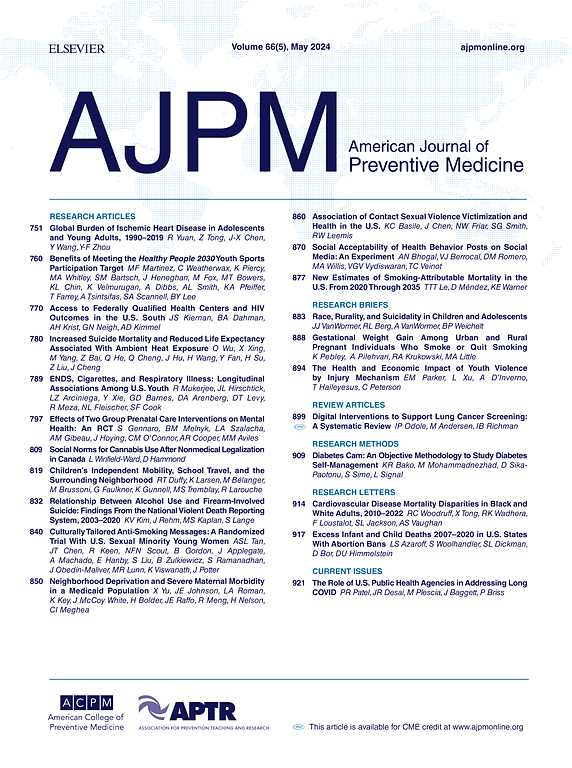虚拟现实技术对ICU重症患者谵妄、睡眠质量和负性情绪的影响
IF 4.5
2区 医学
Q1 MEDICINE, GENERAL & INTERNAL
引用次数: 0
摘要
目的探讨虚拟现实技术对重症监护病房(ICU)危重患者谵妄、睡眠质量和负面情绪的影响,以评估其在临床护理中的潜在应用。方法对一组ICU危重患者进行虚拟现实干预,包括沉浸式虚拟环境体验,旨在缓解患者的焦虑和不适。使用谵妄评估量表、匹兹堡睡眠质量指数(PSQI)和负面情绪量表进行干预前和干预后评估,以比较虚拟现实技术的变化和量化效果。结果干预后,谵妄的发生率明显降低,患者谵妄评估量表得分较干预前有显著下降(P<0.05),说明虚拟现实干预对谵妄的预防有积极作用。在睡眠质量方面,干预后患者PSQI评分有显著改善(P<0.01),反映了虚拟现实技术在提高睡眠质量方面的有效性。此外,负性情绪量表得分也显著降低(P<0.01),表明患者的焦虑和抑郁症状得到了显著缓解。讨论虚拟现实技术在ICU重症患者护理中具有显著的干预效果,可有效降低谵妄发生率,改善睡眠质量,缓解负面情绪。该技术为危重患者提供了一种创新的心理干预方法,具有良好的临床应用前景,值得在未来护理实践中进一步推广和研究。本文章由计算机程序翻译,如有差异,请以英文原文为准。
The Impact of Virtual Reality Technology on Delirium, Sleep Quality, and Negative Emotions in Critically Ill Patients in the ICU
Introduction
To investigate the effects of virtual reality technology on delirium, sleep quality, and negative emotions in critically ill patients in the intensive care unit (ICU), with the aim of assessing its potential application in clinical nursing
Method
A cohort of critically ill patients in the ICU underwent virtual reality interventions, which included immersive virtual environment experiences designed to alleviate patient anxiety and discomfort. Pre- and post-intervention assessments were conducted using the delirium assessment scale, the Pittsburgh Sleep Quality Index (PSQI), and a negative emotion scale to compare changes and quantify the effects of virtual reality technology.
Results
Following the intervention, the incidence of delirium significantly decreased, with patients’ scores on the delirium assessment scale showing a notable decline compared to pre-intervention levels (P<0.05), indicating a positive effect of virtual reality interventions in the prevention of delirium. In terms of sleep quality, patients demonstrated significant improvements in PSQI scores post-intervention (P<0.01), reflecting the effectiveness of virtual reality technology in enhancing sleep quality. Additionally, scores on the negative emotion scale also significantly decreased (P<0.01), indicating a substantial alleviation of patients’ anxiety and depressive symptoms.
Discussion
Virtual reality technology exhibits significant intervention effects in the nursing care of critically ill patients in the ICU, effectively reducing the incidence of delirium, improving sleep quality, and mitigating negative emotions. This technology offers an innovative psychological intervention approach for critically ill patients, demonstrating promising clinical application prospects that warrant further promotion and research in future nursing practice.
求助全文
通过发布文献求助,成功后即可免费获取论文全文。
去求助
来源期刊

American Journal of Preventive Medicine
医学-公共卫生、环境卫生与职业卫生
CiteScore
8.60
自引率
1.80%
发文量
395
审稿时长
32 days
期刊介绍:
The American Journal of Preventive Medicine is the official journal of the American College of Preventive Medicine and the Association for Prevention Teaching and Research. It publishes articles in the areas of prevention research, teaching, practice and policy. Original research is published on interventions aimed at the prevention of chronic and acute disease and the promotion of individual and community health.
Of particular emphasis are papers that address the primary and secondary prevention of important clinical, behavioral and public health issues such as injury and violence, infectious disease, women''s health, smoking, sedentary behaviors and physical activity, nutrition, diabetes, obesity, and substance use disorders. Papers also address educational initiatives aimed at improving the ability of health professionals to provide effective clinical prevention and public health services. Papers on health services research pertinent to prevention and public health are also published. The journal also publishes official policy statements from the two co-sponsoring organizations, review articles, media reviews, and editorials. Finally, the journal periodically publishes supplements and special theme issues devoted to areas of current interest to the prevention community.
 求助内容:
求助内容: 应助结果提醒方式:
应助结果提醒方式:


